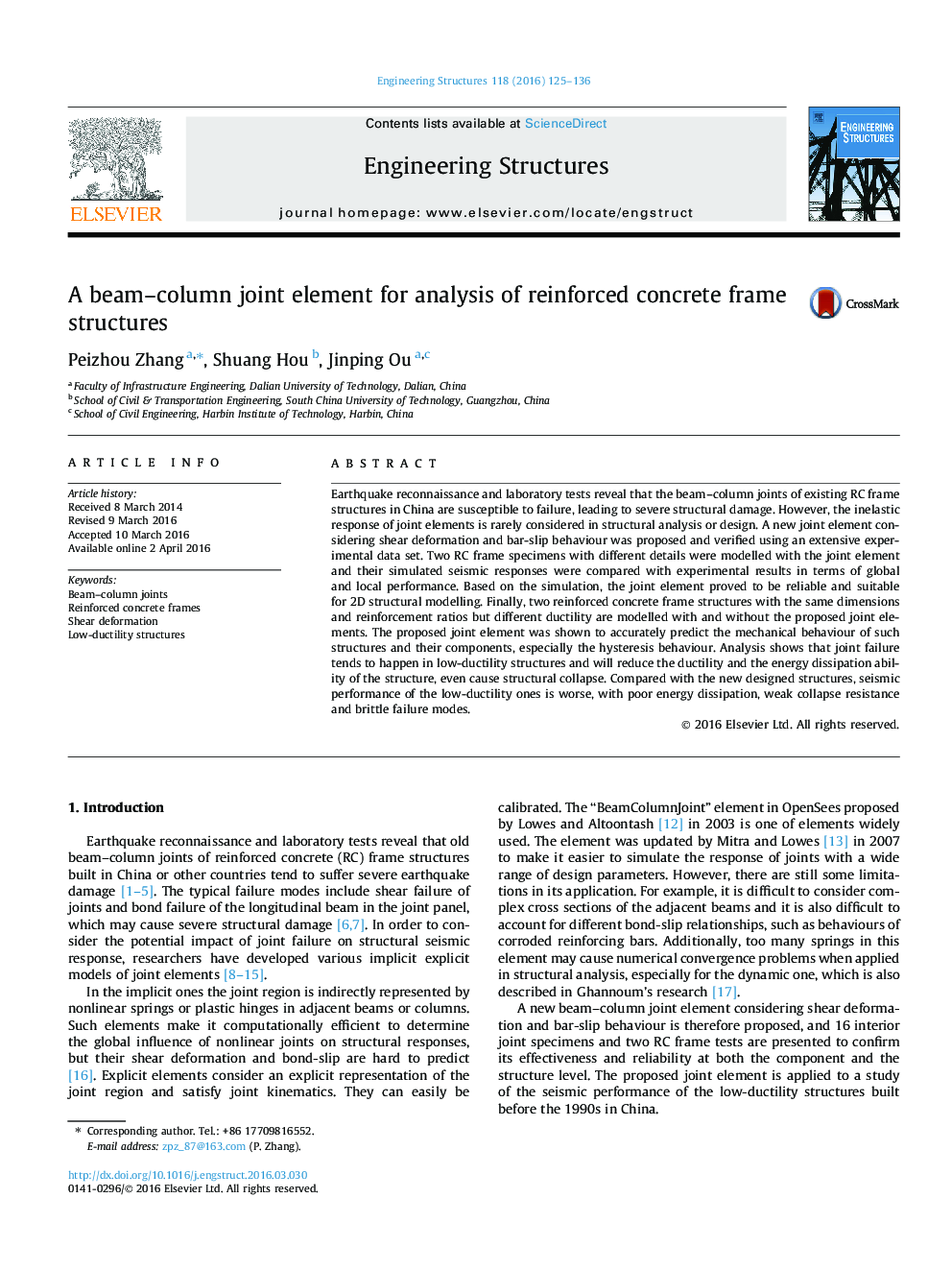| کد مقاله | کد نشریه | سال انتشار | مقاله انگلیسی | نسخه تمام متن |
|---|---|---|---|---|
| 265728 | 504325 | 2016 | 12 صفحه PDF | دانلود رایگان |
• A new beam–column joint element considering shear deformation and bar-slip behaviour was proposed.
• An experimental data set and two RC frame tests were used to evaluate the proposed joint element.
• The proposed joint element was applied to assess the seismic performance of the low-ductility structures.
• Joint failure tends to happen in low-ductility structures and their seismic performance is undesirable.
• Very important to consider joint modelling when analysing structures with low ductility.
Earthquake reconnaissance and laboratory tests reveal that the beam–column joints of existing RC frame structures in China are susceptible to failure, leading to severe structural damage. However, the inelastic response of joint elements is rarely considered in structural analysis or design. A new joint element considering shear deformation and bar-slip behaviour was proposed and verified using an extensive experimental data set. Two RC frame specimens with different details were modelled with the joint element and their simulated seismic responses were compared with experimental results in terms of global and local performance. Based on the simulation, the joint element proved to be reliable and suitable for 2D structural modelling. Finally, two reinforced concrete frame structures with the same dimensions and reinforcement ratios but different ductility are modelled with and without the proposed joint elements. The proposed joint element was shown to accurately predict the mechanical behaviour of such structures and their components, especially the hysteresis behaviour. Analysis shows that joint failure tends to happen in low-ductility structures and will reduce the ductility and the energy dissipation ability of the structure, even cause structural collapse. Compared with the new designed structures, seismic performance of the low-ductility ones is worse, with poor energy dissipation, weak collapse resistance and brittle failure modes.
Journal: Engineering Structures - Volume 118, 1 July 2016, Pages 125–136
